Visual Culture Viewer
has been merged with
Visit that blog to see new material;
this blog will remain as an archive
We've moved
In the March issue of Popular Photography magazine, the editor's note, by Miriam Leuchter, is called "What Is a Photograph?"
You'd think that, after 73 years, a magazine called Popular Photography would have figured that out. (Ba-da-bump!)
Actually, though, the editorial is about the magazine's annual Reader's Photos Contest. This year, in two of the categories, the winners were what the magazine calls composites, and what I call Photoshop jobs.
One photo shows a motorcyclist being chased by a tornado; another shows a flock of seagulls wheeling around a lighthouse in amazingly photogenic formation. Neither scene ever actually existed as photographed.
Now, in my experience, photographers can be a vocal lot. And a lot of them weren't crazy about the idea of Photoshop jobs winning the contest.read more at Photoshop and Photography: When Is It Real?
I have to admit that when I saw the winners revealed in a previous issue, I was a bit taken aback, too. I mean, composition and timing are two key elements of a photographer's skill, right? If you don't have to worry about composition and timing, because you can always combine several photos or move things around later in Photoshop, then, well -- what is a photograph?


Photoshop and Photography: When Is It Real?

How might artists position themselves between entertainment culture and traditional techniques of representation such as drawing? How might those different possibilities map onto the display practices of commercial gallery venues or nonprofit art spaces? Peter Rostovsky and Olav Westphalen, collaborating under the name PROW, challenge conditions of spectacularization that entangle artistic practices, paradoxically by adopting elements of the most successful model of collective media production: cinema.
In “PROW: The Prequel,” the foyer of Sara Meltzer Gallery contains a series of light boxes displaying posters for sequels to nonexistent movies such as a slasher pic titled Pet II and the disaster flick Iceberg III (mischievously tagged MATTER HAS A MIND . . . ONCE MORE). Lining the main gallery’s walls are six watercolors appropriated from Google’s open-source 3-D modeling software. The drawings, each hand-rendered by one of the two artists, adopt an eclectic range of imagery conjured by wiki-culture’s anonymous users: a floating baby, a stunt actor hoisted aloft in a green-screen environment, a staged plane crash. The exhibition’s central kinetic sculpture, Pyre, 2010, is an agglomeration of B-movie gimmicks: As the lights dim, a dramatic chord is struck by a mechanized cello and violin, activating a phalanx of industrial fans that raise a curtain of theatrically lit fabric into a simulacral fire.
Replacing the gadgetry of Pyre, the central sculpture in the “Anti-Prow” exhibition at the nonprofit Art in General is a Tatlin-like monument consisting of an interlocking group of red ladders surrounded by walls papered with historic political and artistic manifestos. On each wall is a framed graphite drawing of an iconic public death scene (split along its vertical axis, with one side rendered by Rostovsky and the other by Westphalen): the bodies, lying in state, of Lenin and Mao, the corpses of Kurt Cobain and Che Guevara surrounded by police, and the victims of the Jonestown massacre. Like its Chelsea counterpart, “Anti-Prow” addresses a set of questions about the value of artistic labor—this time by taking up the legacy of political activism, and representations of politics, in the visual arts.
Prow
| Superman's Debut Comic Book Issue Sells for $1 Million at ComicConnect.com |
 The June 1938 cover of 'Action Comics' that first featured Superman, is shown. AP Photo/Comic Connect Corp. |
| NEW YORK, NY (AP).- A rare copy of the first comic book featuring Superman sold Monday for $1 million, smashing the previous record price for a comic book. A 1938 edition of Action Comics No. 1, widely considered the Holy Grail of comic books, was sold from a private seller to a private buyer, neither of whom released their names. The issue features Superman lifting a car on its cover and originally cost 10 cents. The transaction was conducted by the auction site ComicConnect.com. Stephen Fishler, co-owner of the site and its sister dealership, Metropolis Collectibles, orchestrated the sale. Fishler said it transpired minutes after the issue was put on sale at around 10:30 a.m. Eastern time. He said that the seller was a 'well known individual' in New York with a pedigree collection, and that the buyer was a known customer who previously bought an Action Comics No. 1 of lesser grade. 'It's considered by most people as the most important book,' said John Dolmayan, a comic book enthusiast and dealer best known as the drummer for System of a Down. 'It kind of ushered in the age of the superheroes.' Dolmayan, who owns Torpedo Comics, last year paid $317,000 for an Action Comics No. 1 issue for a client. Others have sold for more than $400,000, he said, but this copy fetched a much higher price because it's in better condition. It's rated an '8.0 grade,' or 'very fine.' Dolmayan said he didn't buy this copy but he wishes he could have. 'The fact that this book is completely un-restored and still has an 8.0 grade, it's kind of like a diamond or a precious stone. It's very rare,' he said. There are only about 100 copies of Action Comics No. 1 believed to be in existence, and only a handful have been rated so highly. It's rarer still for those copies to be made available for sale. 'The opportunity to buy an un-restored, high-grade Action One comes along once every two decades,' Fishler said. 'It's certainly a milestone.' The sticker shock was astounding to Fishler, nevertheless. 'It is still a little stunning to see 'a comic book' and '$1 million' in the same sentence,' Fishler said. 'There's only one time a collectible hits the $1 million threshold.' |
Superman's Debut Comic Sells for $1 Million
| Portland Art Museum Opens Exhibition with Works that Leave Many 'Disquieted' |
 Doug Aitken, 'Free', 2009. LED lit lightbox, 48 x 157 x 7 7/8 inches. Regen Projects, Edition of 4. ©Courtesy: 303 Gallery, New York; Victoria Miro Gallry, London; Galerie Eva Presenhuber, Zurich; Regen Projects, Los Angeles. |
| PORTLAND, OR.- This spring the Portland Art Museum presents 'DISQUIETED'. Curated by Bruce Guenther, the Museum’s curator of modern and contemporary art, the exhibition brings together 38 works that invite engagement and discussion of the elements of modern life that leave so many feeling disquieted. For many, today’s world is marked by events beyond our control. This unease is a natural response to a tumultuous and troubling decade filled with natural disasters, global terrorism, and worldwide financial collapse. Artists have always reflected and reacted to the world around them—and contemporary art, through its form or content, often disturbs as much as it provides solace. In 'DISQUIETED', a roster of 28 renowned artists from four continents explore our social conditions and respond to the most compelling issues of the day, challenging our preconceptions and exposing our vulnerability in turbulent times. “These are some of the most important artists working today,” said Brian Ferriso, The Marilyn H. and Dr. Robert B. Pamplin, Jr. Director. “The objects presented are significant and, like all great art, provide a feast for the eyes as well as food for thought.” The works—including paintings, photography, sculptures, and time-based film and video installations—evoke an instant reaction. Whether unsettling or benign, all require a second look. The issues presented are both intimate and global, prompting viewers to consider their own humanity and their place in the world. “The experience is post-retinal—you take it with you and it becomes a part of your next conversation,” said Guenther. “These works provoke feelings that may be lying beneath the surface or below a person’s façade of contentment. The emotional reaction sneaks up on you, perhaps even moving you from laughter to tears.” The artists presented in the exhibition are among today’s foremost figures in contemporary art; most have never been exhibited in Portland. Artists featured in the exhibition include: Doug Aitken, Chiho Aoshima, John Baldessari, Tanya Batura, Sanford Biggers, Gregory Crewdson, Carroll Dunham, Tracey Emin, Ellen Gallagher, Andreas Gursky, Barbara Kruger, Glenn Ligon, Robert Longo, Paul McCarthy, Ron Mueck, Takashi Murakami, Wangechi Mutu, Shirin Neshat, Lari Pittman, Jaume Plensa, Charles Ray, Daniel Richter, John Sonsini, Adam Stennett, Jan Tichy, Bill Viola, Sue Williams, Su-en Wong. 'DISQUIETED' iPhone/iPod App The exhibition is accompanied by an iPhone/iPod Application (App) which will be available through iTunes. The Museum will also rent iPod Touches with the tour app installed for visitors. The application features videos of artists from the exhibition discussing their work, practice, and concerns. The Museum’s education department also produced video conversations with the exhibition’s curator and local educators. Matching the design of the exhibition, the tour app allows visitors to learn more about individual objects and artists in any order. The app includes content on the following artists: 1. Charles Ray – Artist Feature Video 2. Su-en Wong – Conversation About Art Video 3. John Baldessari - Artist Feature Video 4. Sue Williams - Conversation About Art Video 5. Tracey Emin - Conversation About Art Video 6. Gregory Crewdson – Artist Feature Video 7. Paul McCarthy – Conversation About Art Video 8. Wangechi Mutu – Conversation About Art Video 9. Glenn Ligon – Conversation About Art Video 10. Ellen Gallagher – Artist Feature Video 11. Lari Pittman – Artist Feature Video 12. Carroll Dunham – Conversation About Art Video 13. John Sonsini – Conversation About Art Video 14. Ron Mueck –Conversation About Art Video 15. Andreas Gursky – Conversation About Art Video |
Works that Leave Many 'Disquieted'


The Fauxreel Interview
| Musée du quai Branly Proposes the Discovery of an 'Image Factory' |
 Installation view of the exhibition. ©Musée du quai Branly. Photo: Antoine Schneck. |
| PARIS.- After Qu’est-ce qu’un corps? and Planète métisse, the 3rd major anthropology exhibition of the musée du quai Branly proposes the discovery of an 'image factory' spanning 5 continents to the public. With 160 works and objects on display, the exhibition solicits a decryption of the great artistic and material productions of Humanity in order to reveal all the things that one does not see outright in an image. This comprehension of images is based on 4 major iconological models created by Man, which go beyond any geographical or chronological classification, whether in Africa, in the 15th to 16th century Europe, in the Americas of the Indians from Amazonia or of the Inuits of Alaska, right up to the Australia of the Aboriginals. The exhibition unravels these 4 models – translating 4 major world views – which are totemism, naturalism, animism and analogism. With the image Factory, the visitor discovers the different principles of decryption according to which civilizations see the world and account for the world. The itinerary of the image factory solicits the visitor to go through 4 sections corresponding to 4 major systems of world views known as “ontologies”: the part “an animated world” is devoted to animism, “an objective world” to naturalism, “a sub-divided world” to totemism and “an entangled world” to analogism. A 5th section, for comparative purposes, makes it possible to understand, with a few examples of “deceptive cognates”, that formal procedures or iconographic devices very close in appearance actually meet completely different figurative intentions. The exhibition the image factory helps the public understand and decrypt these 4 major systems of world views created by Man. An animated world: animism masque "Atujuwa" femelle © musée du quai Branly photo Thierry Ollivier, Michel Urtado The 1st section of the exhibition deals with animism, i.e., the generalization to non-humans of a human type interiority. All entities – an animal, a plant, an artefact – are endowed with interiority, animated by its own speci fic intentions, capable of action and judgment. On the other hand, the physical appearance changes from one entity to another.The animist model makes the interiority of the different sorts of the existing beings visible and shows that this interiority is lodged in bodies with dissimilar appearances. The most common images are those which contain tenuous signs of humanity – features of the face, for instance – grafted on mainly zoomorphous shapes. They generally feature non-humans about whom, through a few human attributes, it is shown that they do possess, just as the humans do, an interiority which makes them capable of a social and cultural life. Thus, the Yupi’k masks of Alaska feature the interiority of animals with the insertion of a human face in an animal head, or by adding human limbs to an animal body. In Amazonia, the Indians were attached to transforming human bodies themselves in images, by borrowing from designs and attributes with animal bodies in order to do this. By putting on an animal costume, humans borrow their biological aptitudes from animals and therefore the effectiveness with which the animals make use of their environment. Humans do not content themselves just with collecting appendages from animals, they also borrow from them designs for adorning their own bodies and mark speci fic status or states – maternity, paternity, mourning, illness… An objective world: naturalism arrière cour d'une maison hollandaise, Pieter de Hooch (1629-1684) © R.M.N. photo Gérard Blot The 2nd section of the exhibition exhibits another ontological model: naturalism. The idea behind naturalism is the opposite of the one behind animism: it is not by their bodies, but by their mind that humans differentiate themselves from non humans, just as it is also by their mind that they differentiate themselves from among one another. This world view, which has been dominant in the West for centuries, must represent two features: - the distinctive interiority of each human (the painting of the soul): only humans possess an interiority and are capable of rational discernment, - the physical continuity of beings and things in a homogenous space (the imitation of nature): all humans are subjected to the same decrees of nature, and do not allow standing out by ways of living, as was the case in animism. Contrary to the 3 other sections of the exhibition, “an objective world” brings out a very clear historic movement in the iconography, arising from a tension between the interiority and the physicality specific to naturalism: the interiority which asserts itself at the beginning in a resounding manner (right from before the Renaissance) dissolves over time to pave the way for an auto-referential physicality, reducing henceforth both interiority and life to physical parameters (birth of photography in the 19th century). A sub-divided world: totemism peinture sur écorce © musée du quai Branly photo Thierry Ollivier, Michel Urtado This section presents the world of totemism, made of a great number of classes of beings comprising humans and various sorts of non-humans. The members of each class share different sets of physical and moral qualities that the totem is considered to incarnate. Totemism ignores the differences between beings on the moral as well as physical plane in order to favour sharing, within the same class, of qualities which apply as much to humans as they do to non-humans. In the aboriginal societies of Australia, the core of qualities characterizing each class originates from an ancestral prototype traditionally known as “Dream being”. All the images are all over linked to the Dream beings and to the actions in which these prototypes have been engaged in order bring the world to order and render it apt for the subdivisions that they themselves incarnate. The figurative objectives of Australian totemism are implemented by means of 2 well differentiated strategies: - the body appears as i f at the origin of the image that it has given rise to; it is for example “imprint of the body” of a painting on bark, - the 2nd strategy shows how the world was formed by beings that one cannot see but which have left traces on the landscape; this is what we call “the imprint of movement”. An entangled world: analogism poupée rituelle © musée du quai Branly photo Thierry Ollivier, Michel Urtado The 4th section of the image Factory proposes the discovery of the iconological model of analogism to the public, the opposite model to the preceding model. To hold an analogical point of view on the world implies perceiving all those who occupy it as being different from one another. Thus, instead of merging entities sharing the same substances within the same class, this system distinguishes all the components of the world and differentiates them into singular elements.Such a world, in which each entity makes up a unique specimen, would become impossible to inhabit and to imagine if one did not strive to find stable correspondences between its human and non human components, as between the parts that they are made up of. For example, as per the qualities that we attribute to them, a few things will be associated with heat and other with cold, with day or with night, with dry or with wet. Analogist thinking thus aims at making networks of correspondence between discontinuous elements present, which implies multiplying the components of the image and demonstrating their relations. We can find numerous contemporary illustrations of animist ontology among the great Oriental civilizations, in West Africa or in the Indian communities of the Andes and Mexico. The classic figure of analogism is the chimera, a being made up of attributes belonging to different species, but presenting a certain coherence on the anatomical plane. The chimera is a hybrid whose constitutive elements stem from heterogeneous registers, but which can meet in a conjunctural manner in a completely singular being. Mirages of resemblances: the deceptive cognates grand masque de diablada © musée du quai Branly photo Thierry Ollivier, Michel Urtado The itinerary culminates with a didactic presentation, side by side, of images having similar formal properties, but whose figurative conventions meet completely different principles. This last stage of the exhibition explains to the public how to decrypt these images in order to weigh the differences, drawing its attention to the fact that a purely formal approach of images does not allow demonstrating the different world views that they express.For example, a Dutch landscape painting (naturalism) holds a dialogue with a Chinese landscape painting (analogism); a bird shaped mask representing a human type interiority in an animal body (animism)is compared with a bird shaped mask having composite attributes (analogist chimera). see the exhibit site at musée du quai Branly (in French with some English) |
The Making of Images: musée du quai Branly

Chinese Subjects and the American Art Discourse
 | |||||||||||||||
|
Miss Van: She-Wolves
 Victor Castillo, 'The Infinite Complexities of Christmas', 2010. Acrylic on canvas, 24 x 24 inches. Photo: Courtesy Merry Karnowsky Gallery. |
LOS ANGELES, CA.- Merry Karnowsky Gallery presents Victor Castillo: Strange Fruit and Miss Van: She-Wolves. The two Barcelona-based artists unfold their unique personal perspectives on subjects like seduction, temptation, innocence, desire, and cruelty. A moral allegorist, Chilean artist Victor Castillo pairs classical painting with cartoon-like characters. He paints children in dark secret gardens, where they innocently reenact violent media images with brutality and indifference. Most of the characters in Castillo’s paintings have phallic, hot-dog shaped noses, humorously suggesting Pinocchio. He also makes reference to contemporary culture, human error and vices, politics, and the loss of values in the increasing consumption of modern life, which he sees as an insatiable desire that blinds us. Castillo’s work has shown in Spain, Chile, Cuba, Argentina, Brazil, Japan, Germany, the United States, Canada, Belgium and Taiwan, and has been featured in Juxtapoz and Hi-Fructose magazines. |
Victor Castillo: Strange Fruit
| Daadgalerie Presents Phil Collins Most Recent Film 'I Am My Mother' |
 Phil Collins, 'Soy mi madre' (I Am My Mother) 2008. 16mm color film/DVD 28 min. © and Courtesy: The Artist. |
| BERLIN.- The films and film installations, photographs and performances of the British artist Phil Collins are humorous and serious, emotional and complex at same time. His interest lies in cultural anthropology and political phenomena and their symptomatic manifestations, i.e., in popular culture or in the way language is used. Collins’s 3-channel film installation “The World Won’t Listen” serves as a good example of this when Collins offers up a stage to fans of the British pop band The Smiths from Columbia, Indonesia and Turkey. They sing the karaoke version of songs from the eponymously named Smiths album, which was cult in the 1980s -- not only for subversive teenagers in Thatcher’s United Kingdom. As part of the Berlin International Film Festival’s program Forum Expanded and parallel to Phil Collins’s curated project “Auto-Kino!” in the Temporary Kunsthalle Berlin (from 5 February 2010) the daadgalerie will be presenting Collin’s most recent film soy mi madre (I am my mother) (2008, 16mm/DVD, 28min) for which the artist hijacks the ubiquitously popular telenovela format. Filmed in Mexico City with well-known TV actors, Collins translation of the Latin American variant of the soap opera falls into a hyperdynamic, jarring melodrama with opulent sets in which the archetypical identity patterns of the genre are sharpened to a point. Collins alludes to the romantic stereotypical telenovela of the 1980s and 90s at its high point, and where underlying music and facial expressions play a leading role. The daily broadcast TV-novel is famous for creating strong moments of identification which occasionally have lead to the spectator’s mingling of the fictional reality with daily life outside of the media. Earlier works of Collins also deal with the effects of the media on the consumer’s life; for example, his project for the Turner Prize Exhibition in 2006 “Return of the Real” – a press conference with “victims” of reality-TV shows in the UK. A real drama’s collision with its communicative effects through the media coverage were the events of 9/11. In Phil Collins’s early and rarely shown video hero (2002, DVD, 40min) a New York reporter stands in front of the camera delivering his own personal version of the events of September 11, 2001 – as if “freely associating” or undertaking a “talking cure,” albeit assisted by alcohol. Together both soy mi madre and its counterpoint hero make reference to the late 1990s in the USA and the following Bush years and their reflection in the media. A commission of the Aspen Art Museum, Colorado, soy mi madre will be soon broadcast on local television there. Simultaneous to the exhibition at the daadgalerie, an accompanying catalog to the exhibition by the Aspen Art Museum, Colorado, will be published. Phil Collins, born in Runcorn, UK, in 1970, was a guest of the Berliner Künstlerprogramm/ DAAD in 2009. In 2010 he will participate in the 6th Berlin Biennial. In 2009 in a one-person-show at the Tramway in Glasgow he presented the project “The world won’t listen” which he started in 2005 at the Istanbul Biennial. In 2006 he was nominated for the Turner Prize. Since the late 1990s Collins has participated in numerous international group and solo-exhibitions, for example, at the Tate Britain und Tate Modern, at CAC Vilnius, P.S.1 New York, Wexner Center for the Arts, Columbus, SFMoMA, Aspen Art Museum, Carnegie Museum of Art, Stedelijk Museum, Frankfurter Kunstverein and Schirn Kunsthalle Frankfurt. Phil Collins lives and works in Berlin. |
Phil Collins Film 'I Am My Mother'




Komiks relief

Floppy Disk Art
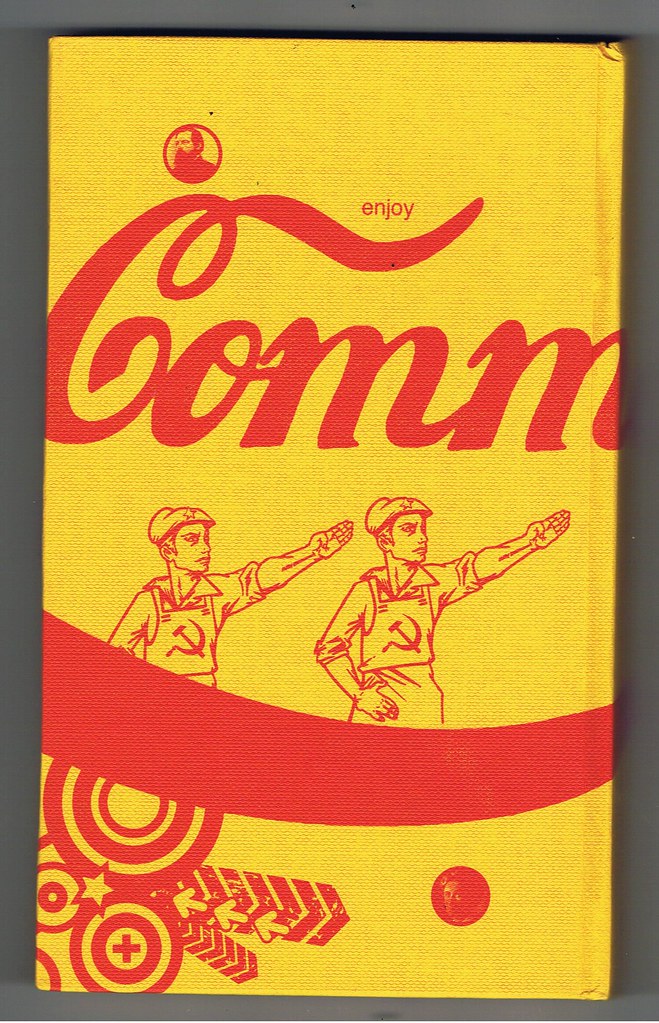
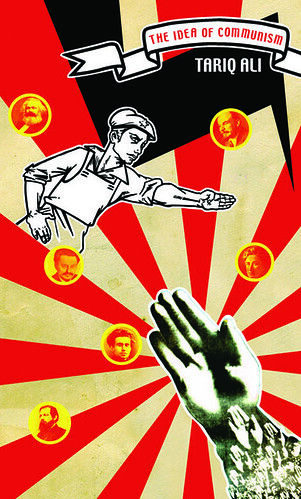
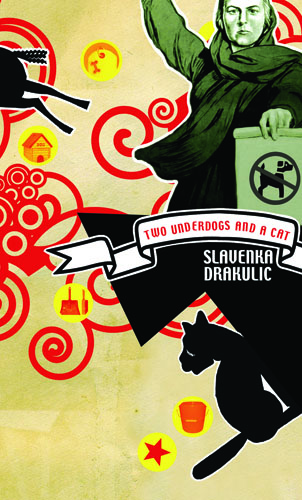
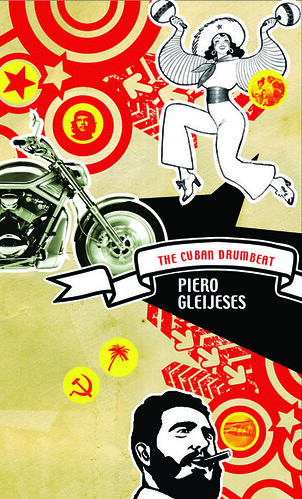
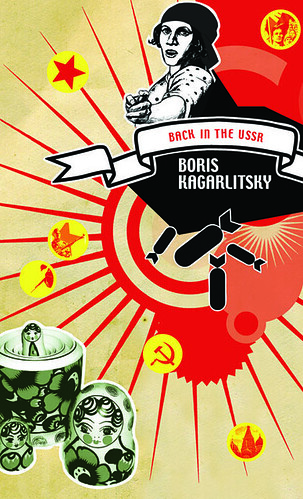
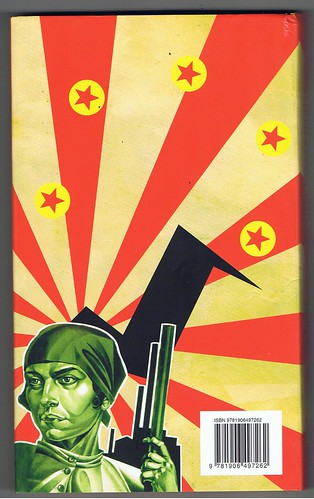
Soviet-style covers for histories of Communism